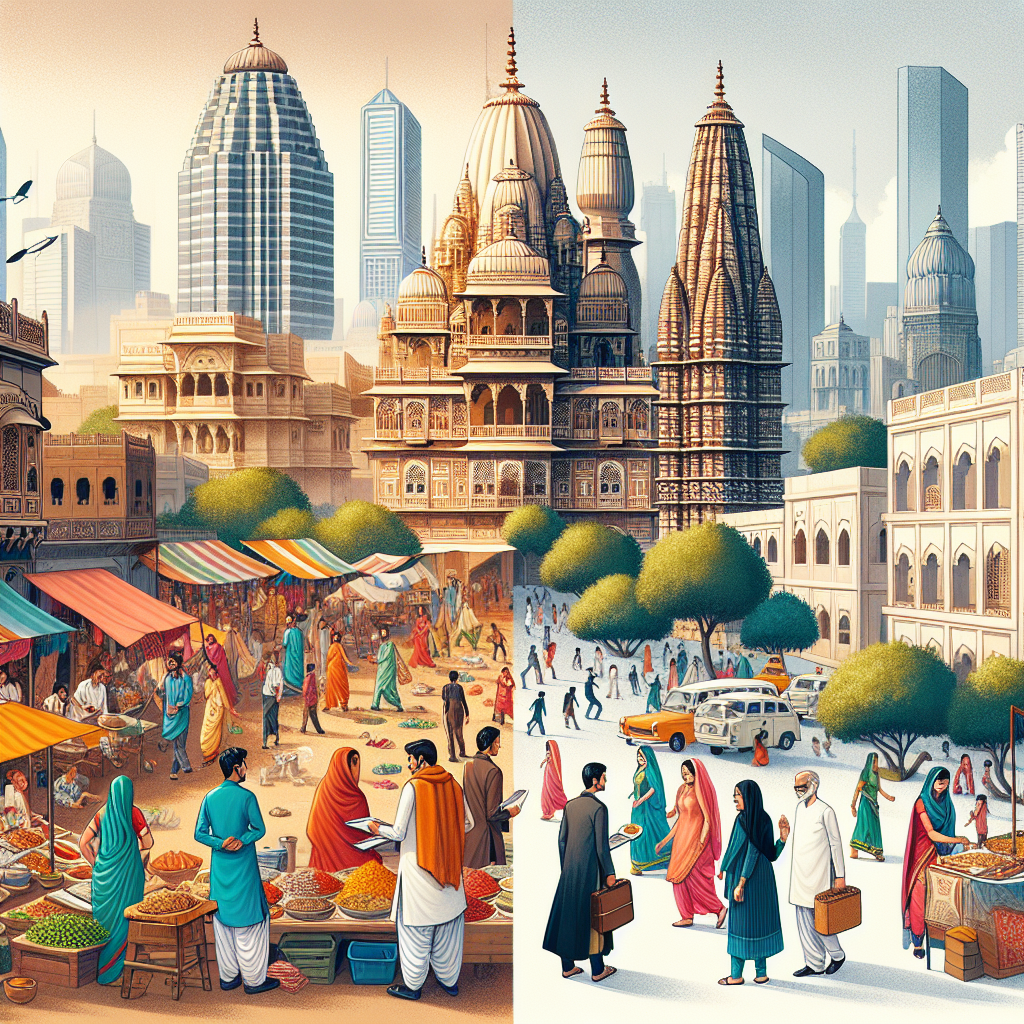Gujarat Delhi Live: A Dynamic Interplay of Culture, Economy, and Politics

The relationship between Gujarat and Delhi is a fascinating tapestry woven with threads of culture, economy, and politics. As two of India’s most significant regions, they play pivotal roles in shaping the nation’s trajectory. This article delves into the dynamic interplay between Gujarat and Delhi, exploring their cultural exchanges, economic ties, and political influences. Through a comprehensive analysis, we aim to provide valuable insights into how these two regions contribute to India’s growth and development.
Cultural Exchanges: A Rich Tapestry of Traditions
Gujarat and Delhi, though geographically distinct, share a vibrant cultural exchange that enriches both regions. This cultural interplay is evident in various forms, from festivals to cuisine, and has been instrumental in fostering a sense of unity amidst diversity.
Festivals and Celebrations
Both Gujarat and Delhi are known for their grand celebrations of festivals, which often see participation from people across the country. The Navratri festival in Gujarat, famous for its Garba and Dandiya Raas dances, attracts visitors from Delhi and beyond. Similarly, the Diwali celebrations in Delhi, marked by elaborate decorations and fireworks, draw Gujaratis who reside in the capital.
Culinary Delights
The culinary exchange between Gujarat and Delhi is another testament to their cultural synergy. Delhi’s food scene is enriched by the presence of Gujarati cuisine, with dishes like Dhokla, Thepla, and Fafda becoming popular among Delhiites. Conversely, Delhi’s street food, including Chaat and Parathas, has found a place in the hearts of Gujaratis.
Economic Ties: Driving Growth and Development
The economic relationship between Gujarat and Delhi is characterized by robust trade, investment, and business collaborations. Both regions are economic powerhouses in their own right, contributing significantly to India’s GDP.
Trade and Commerce
Gujarat, with its strategic location and well-developed ports, serves as a gateway for trade between India and the rest of the world. Delhi, as the national capital, acts as a hub for commerce and industry. The synergy between these two regions facilitates the smooth flow of goods and services, boosting economic growth.
- Gujarat’s ports handle a significant portion of India’s maritime trade, with major exports including textiles, chemicals, and gems.
- Delhi’s role as a commercial center supports the distribution and marketing of these goods across northern India.
Investment and Business Collaborations
Both Gujarat and Delhi have attracted substantial investments from domestic and international businesses. The Gujarat International Finance Tec-City (GIFT City) and Delhi’s burgeoning startup ecosystem are prime examples of their economic dynamism.
- GIFT City, a global financial hub, has seen investments from leading financial institutions, enhancing Gujarat’s economic stature.
- Delhi’s startup ecosystem, supported by government initiatives and venture capital, has fostered innovation and entrepreneurship.
Political Influences: Shaping National Policies
The political landscape of Gujarat and Delhi has a profound impact on national policies and governance. Leaders from both regions have played pivotal roles in shaping India’s political discourse.
Leadership and Governance
Gujarat has produced influential political leaders who have left an indelible mark on national politics. The most notable among them is Narendra Modi, who served as the Chief Minister of Gujarat before becoming the Prime Minister of India. His leadership style and policies have been influenced by his tenure in Gujarat.
Delhi, as the seat of the central government, is a political nerve center where key decisions affecting the entire nation are made. The interplay between state and central politics often sees leaders from Gujarat influencing policies at the national level.
Policy Initiatives
Several policy initiatives have emerged from the collaboration between Gujarat and Delhi, addressing critical issues such as infrastructure development, education, and healthcare.
- The Delhi-Mumbai Industrial Corridor (DMIC), a mega infrastructure project, aims to create a high-tech industrial zone between Delhi and Mumbai, with Gujarat playing a crucial role in its development.
- Educational exchanges and collaborations between institutions in Gujarat and Delhi have led to the sharing of best practices and innovations in teaching and research.
Case Studies: Exemplifying the Gujarat-Delhi Connection
To further illustrate the dynamic relationship between Gujarat and Delhi, we examine two case studies that highlight their collaboration and mutual influence.
Case Study 1: The Vibrant Gujarat Summit
The Vibrant Gujarat Summit, held biennially in Gandhinagar, is a global business event that attracts participants from across the world, including Delhi-based businesses and policymakers. The summit serves as a platform for showcasing Gujarat’s investment potential and fostering economic partnerships.
Delhi’s participation in the summit has led to several collaborative projects, including joint ventures in sectors such as renewable energy, information technology, and manufacturing. The summit exemplifies how Gujarat and Delhi can work together to drive economic growth and innovation.
Case Study 2: The Delhi-Gujarat Cultural Exchange Program
The Delhi-Gujarat Cultural Exchange Program is an initiative aimed at promoting cultural understanding and appreciation between the two regions. Through this program, artists, musicians, and performers from Gujarat and Delhi participate in cultural events and workshops, fostering a deeper connection between their communities.
This program has led to increased cultural tourism, with people from both regions visiting each other’s cultural landmarks and festivals. It highlights the power of cultural exchange in building bridges and strengthening ties between diverse communities.
Conclusion: A Synergistic Relationship
The relationship between Gujarat and Delhi is a testament to the power of collaboration and mutual influence. Through cultural exchanges, economic ties, and political influences, these two regions contribute significantly to India’s growth and development. As they continue to work together, Gujarat and Delhi exemplify the potential for regional cooperation to drive national progress.
In conclusion, the dynamic interplay between Gujarat and Delhi is a microcosm of India’s diversity and unity. By embracing their unique strengths and fostering collaboration, they set an example for other regions to follow. As India continues to evolve on the global stage, the partnership between Gujarat and Delhi will undoubtedly play a crucial role in shaping the nation’s future.
